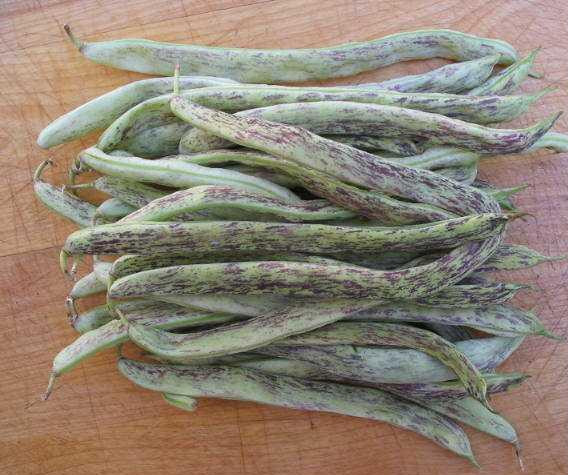How to Grow Delicious Snap Beans All Season Long

Bob Wildfong
Fresh snap beans are a ritual of summer for many gardeners. When we talk about "snap" beans, we mean the fresh pods, usually green, but sometimes yellow, white or purple, that are actually the fruit of the bean plant. Dry seeds for soup and chili grow later, after the pods have swollen and dried. We call them "snap" beans because they are easy to break into smaller pieces for cooking by snapping them with your fingers. If they don't break easily, they are probably too old.
Still, green beans (or yellow, purple, or striped!) don't stay tender forever. The plant's job is really to produce seeds, and if you miss the perfect eating stage by even a week, you'll find that your beans get tough, thick, and seedy. Here are a few ways to keep your beans producing at the peak of freshness all season long!
Plant in Succession
Start sowing bush beans when the night-time temperature has been consistently above 10 degrees Celsius for a full week. Bean seeds like warm soil for germination, and they will rot in cool soil, waiting for warm nights to arrive. But don't plant too many all at once. When your bean plants grow up they will flower, and about 2 weeks later the flowers will have grown into perfectly tender bean pods, ready to eat.
What every gardener learns though, is that it's very easy to plant more beans than you can eat, and a lot of them grow past the eating stage before you can pick them. Then you can let them go to seed, which is great, but they're too tough to eat anymore.
One simple trick is to judge how many beans you can actually eat in two weeks, and just plant that much in your first sowing. Then plant that much again two weeks later. Then repeat every two weeks until about mid-July. When your first plants bear perfect pods, your second sowing will have flowers. Then when the second plants have pods, the third sowing will have flowers. If you time it right, you'll have a constant supply of perfect pods for many weeks until frost.
If you're saving seeds from your beans, use some of the plants from the first sowing and allow them to grow through the full season. It will take all summer, from the earliest sowing all the way into early autumn for most varieties to fully mature into good seeds. Your later sowings are just for eating, because they won't have time to make seeds.
Pick Them All and Pick Them Again
Most bush bean varieties continue to flower as long as they live, but they produce a lot of flowers at first, then only a few when there are pods on the plants. The reason is that the plants try to put their energy into developing the pods and seeds, and there's no point growing more flowers if seeds are already forming. That means you can trick the plants into growing more flowers (which means more pods afterward) if you remove every single pod as you harvest.
Leave no pod behind, and more flowers will grow. Then two weeks later, more pods to eat. This works better when the plants are younger, and you will get fewer flowers and pods later in the season, but it's worth trying to get as much as possible from your bean plants.
If you're saving seeds from your beans, leave some plants unharvested so their pods can grow through the full season. Pick all the pods from your "eating" beans, and leave the "seed" beans alone until the pods are brown and fully dry.
Try Pole Beans
The advice above is for bush beans, but you can have excellent results from pole beans, with less work. Bush beans grow only knee-high, and tend to produce flowers all at once, then pods all at once. Pole beans are tall vines that climb on their own up any sort of trellis, fence, or pole that they can find, sometimes up to 10 or 12 feet tall.
Whereas bush beans flower all at once, pole beans make clusters of flowers as they grow. One perhaps knee-high, then another a little later and a little higher, then another a little later and a little higher. By the time the third or fourth cluster of flowers appears, the first one at the bottom has good pods ready to eat. Then you can pick more every few days higher and higher as they ripen.
Pole beans are very efficient in a home garden because they grow vertically, taking little of your precious sunny space, and also giving a few pods at a time over the whole season. Farmers tend to prefer bush beans because they don't have to support them, but in a home garden pole beans are more than worth the effort of putting up a pole or two for them to climb.
If you're saving seeds from your pole beans, leave some of the lower pods to grow through the full season. They will need the whole summer to ripen to mature, brown, dry pods and you're more likely to get mature seeds from the oldest, lowest clusters.
Hope you have great snap beans all season long!
**
Bob Wildfong is Seeds of Diversity's executive director
Not yet a member?
An annual membership to Seeds of Diversity gives you access to our seed exchange, seed grow-out programs, and our online news.

We depend on donations to do our work.

Thank you for your support!
